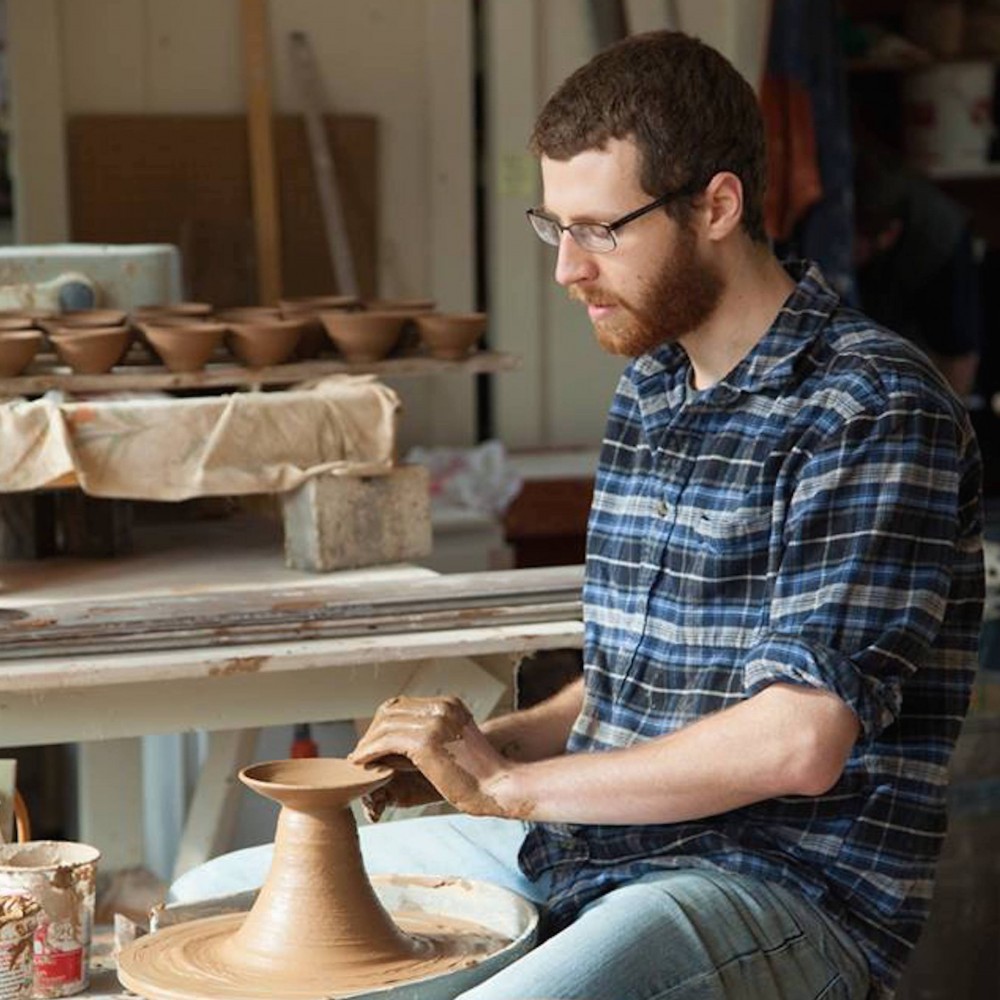
Mitch Iburg
Mitch Iburg is a ceramic artist living and working in the USA. By investigating the local clay deposits, mineral resources, and geological expressions inherent to specific regions, he seeks to create work which combines the physiological substance and emotional characteristics of place to form an expression of its terroir. Through this work, he aims to honour the natural world and its enduring expressions, celebrating our inherent search for meaning through a dialogue with place and time.
What was the inspiration for your Steinbeisser pieces?
I often refer to my vessel-based work as having a strong sense of topography. For the Steinbeisser dinner at the Villa Montalvo in Saratoga, California, I wanted to create a body of work which explored this idea within the context of the region’s local mountain ranges. This series gave me the opportunity to translate a vocabulary of topographical features such as peaks, valleys, fault-lines, and plateaus into ceramic form. The work challenged how one would envision traditional tableware, which commonly features the primary plating space in the center of the dish. With this series of mountain plates, building the elevated ridges in the center provided for an opportunity to push this idea of conventional plating.
Describe your work in 3 words!
Visceral. Shibui. Austere.
What kind of materials do you use and where do you get them from?
All my work is made from clays I harvest directly from the landscape. I go to great lengths to locate, study, and use clays and minerals that I feel are most reflective of their place of origin, even if it means spending a day hauling the clay from the mountainside in five gallon buckets.
Which conscious lifestyle choices are you making and are you considering any new ones?
I have always told myself that one day I should start slowing down and taking more breaks, but the truth is, life is short and there is no end to what can be learned about the world. For me, art making is as much a means of understanding nature as it is a way expressing it. That being said, I try to start each day with a few minutes of meditation and allow time for a walk through the neighborhood around my studio each afternoon. Over the past year I’ve made a stronger effort to support and promote others – especially organizations who are working to empower BIPOC, inner-city, and other youth artists by creating meaningful opportunities and work environments.
What have you rebelled against in the past and what are you rebelling against now?
I maintain a complicated relationship with historical works and traditions. While I strive to make original artwork that is reflective of my own environment and current experiences, I am still deeply fascinated by objects of the past and the methods used to create them. Within the traditions of vessel making it can be difficult to avoid directly referencing these objects because of the expansive and comprehensive history of humankind’s relationship to clay. Rather than trying to rebel against what has been done throughout history, I explore the process of re-envisioning time-endured forms through a personal lens. For instance, my vessel work achieves this by investigating the relationship between coil construction methods and the geological processes through which sediments are deposited in layers. I look at how both reveal the specific conditions of the material at the time of formation, as well as how movement and alteration of these layers reveals energy, movement, and a sense of passing time.